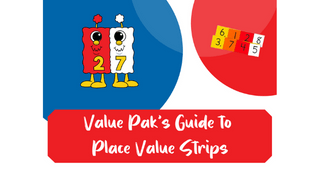There are so many different types of math programs available – Everyday Math, My Math, Go Math, Eureka Math/EngageNY, Math Expressions. They’re all designed around the same standards, though the way each program teaches the standards can be very different.
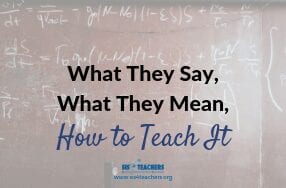
You might get caught up in the language that your book uses, like “start, change, end” or “math mountain,” “part-part-total” or “number bond,” but at the end of the day, what’s important is that the child understands the standard being taught and execute it independently.
When we look at these different books and the way the lessons are laid out, we realize they were designed for the perfect classroom. So, what do you do when you have an at-risk classroom with kids performing below grade level, and you’re trying to teach it the way the book says to, but they’re not getting it? With math going at such a fast pace in U.S. classrooms, we often don’t feel like we can slow down or actually teach the standards in a way that students can actually understand.
One of the things that we at SIS4Teachers always talk about is concrete, pictorial, abstract (CPA). Based on research in Singapore, we know when students learn using CPA, instead of just memorizing procedures, their understanding and application of concepts will be much better.
The district-purchased books often come with a variety of extension activities, differentiation options and ways to ramp up the curriculum in addition to the basic instruction. Many of our project schools struggle with feeling overwhelmed by these books. How do you look at what you have to teach and execute it in an efficient way without spending hours planning for math every day??
Standards vs Curriculum
 First and foremost, I don’t view the district-purchased book as the curriculum. Our curriculum is the math standards that have been laid out by the state, whether you use the Common Core or something different. Those standards outline what you should be teaching.
First and foremost, I don’t view the district-purchased book as the curriculum. Our curriculum is the math standards that have been laid out by the state, whether you use the Common Core or something different. Those standards outline what you should be teaching.
The books purchased by the district are resources, the train that the district has decided to board on the journey of math instruction. The fact that your district has a train is a good thing! The alternative is usually a hodgepodge of binder programs (like things from Teachers Pay Teachers or Pinterest) where lessons are slapped together, which does not really create vertical change in a school in K-5.
All the elements of the book are the cargo cars in the train, and the book’s methodologies are the cargo. Sometimes pieces of the train get rusty and need to be replaced, or the cargo isn’t appropriate for the journey anymore so it gets replaced. For example, if your book does story problems or problem solving (the cargo car), but their way isn’t working for your students, you might decide to look at your scores and make a decision to remove that particular piece of cargo and replace it with the strategy of model drawings.
 Or maybe your book is solving problems different ways and is teaching nine ways to solve a subtraction problem to second graders. You might decide that cargo is not appropriate for your at-risk students, so you remove it and replace it with Math Mights as a strategy that might be a better fit.
Or maybe your book is solving problems different ways and is teaching nine ways to solve a subtraction problem to second graders. You might decide that cargo is not appropriate for your at-risk students, so you remove it and replace it with Math Mights as a strategy that might be a better fit.
However, a common issue we see when we’re out working with schools is when a the district-purchased book is presented as the only means of teaching and teachers are required to teach page-by-page without room to make what they’re teaching relevant for their students.
We have to help teachers learn how to backwards design lessons. As teachers, we should be able to look at our standards, look at our district-purchased book, and make instructional decisions based on where our class is. We can’t have anyone derailing the train, going in a direction that they feel is important or even going in a direction of teaching things “how they learned it,” because that’s not really what math is all about. It’s all about finding a common language among the many different programs used in schools.
Common Core Math Companion: Standards Decoded
 My favorite resources for this, no matter what book your district has purchased, is called the Common Core Math Companion: Standards Decoded. Just looking at some of the standards, some teachers might feel overwhelmed by what they’re asking for. This publication is a joint effort by Corwin Mathematics and NCTM that is really profound. It looks at and decodes the math standards, and helps you know what the standards say, what they mean, and how to teach them. You can choose the K-2 standards or the 3-5 standards.
My favorite resources for this, no matter what book your district has purchased, is called the Common Core Math Companion: Standards Decoded. Just looking at some of the standards, some teachers might feel overwhelmed by what they’re asking for. This publication is a joint effort by Corwin Mathematics and NCTM that is really profound. It looks at and decodes the math standards, and helps you know what the standards say, what they mean, and how to teach them. You can choose the K-2 standards or the 3-5 standards.
In 4th grade, I can look up Operations and Algebraic Thinking and Cluster C and see what is being asked of me with generating and doing an analysis of pattern. The actual cluster will give you an overview and tell you which math practice you’ll be using, giving examples of what each of practice should look like based on the standard that you’re teaching. The book gives you activities to help you understand exactly what the standard means and presents options for what the teacher should be doing and what the students should be doing.
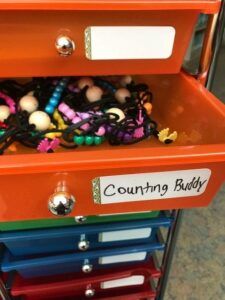 Another part of the book that I love is that it also points out the misconceptions and common errors that students have and how to address them, which is something textbooks don’t always include. Your textbook won’t say things like, “Hey, if they don’t get this, try the place value discs and strips,” or “hey, if your kids are confused on the “Make a 10” strategy, grab a Counting Buddy.” The Common Core Mathematics Companion is really helpful because it starts with the standards, breaks them down in a way that is easy to read, helps connect the misconceptions, what I should be doing as a teacher, what students should be doing, and then it has an activity where it helps you implement everything it in your classroom.
Another part of the book that I love is that it also points out the misconceptions and common errors that students have and how to address them, which is something textbooks don’t always include. Your textbook won’t say things like, “Hey, if they don’t get this, try the place value discs and strips,” or “hey, if your kids are confused on the “Make a 10” strategy, grab a Counting Buddy.” The Common Core Mathematics Companion is really helpful because it starts with the standards, breaks them down in a way that is easy to read, helps connect the misconceptions, what I should be doing as a teacher, what students should be doing, and then it has an activity where it helps you implement everything it in your classroom.
As long as you’re getting at the standard that you’re supposed to teach, the activity that you use doesn’t have to be the same for everyone. The question is: how can we get the child from A to B? How can we go from the problem to the model to the equation and be able to see the connection that’s being made?
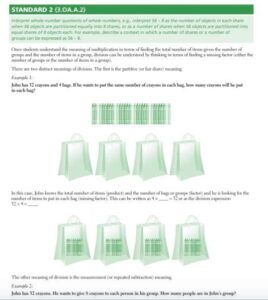 In the Common Core Mathematics Companion, there are some great sample planning pages, where it shows you the standards, the standards for mathematical practice, and it tells you the goal. Then it tells you what the planning should be and there’s a sample activity that gives you ideas for how to get your kids to go in the right direction.
In the Common Core Mathematics Companion, there are some great sample planning pages, where it shows you the standards, the standards for mathematical practice, and it tells you the goal. Then it tells you what the planning should be and there’s a sample activity that gives you ideas for how to get your kids to go in the right direction.
The book also provides you with questions and prompts to use in the classroom. “What did you notice about the even numbers?” “Was the same thing true for all the odd numbers?” It provides differentiated instruction ideas to help students who might be struggling actually access the standards and to help you extend them. It’s not four pages long, just a paragraph or so that tells you what the kids can be doing.
Check out the “Look Inside” feature on Amazon to see more of a preview! K-2 standards and 3-5 standards.
I find that this resource is instrumental in helping the teachers we work with (who aren’t always math majors!) look at, dissect, and understand the standards they have to teach and have a plan to teach them. The Common Core Mathematics Companion is a great resource to use alongside any math series to help give you deeper understanding.
Instead of taking the district-purchased book and teaching page-by-page, we need to make math come alive in the classroom. We have to be able to incorporate CPA to help teachers and students be able to understand the different levels of understandings.
Planning for CPA
Along with the Common Core Math Companion, our teachers (whether K-2 or 3-5) often find a CPA planning sheet to be helpful. When you’re trying to dissect the standards, this sheet prompts you to think, “what tool I would use to help kids think about this concretely, what would I use for pictorial representation, and what would I use abstractly?” Because most teachers don’t eat, breathe and sleep math like I do, this is something that they really struggle to do at first. They know their students don’t get it, they know that they have a wealth of tools in the Math Salad Bar, but they aren’t sure which one to pull when because the book doesn’t really specify and they’re trying to keep on pace with the textbook.

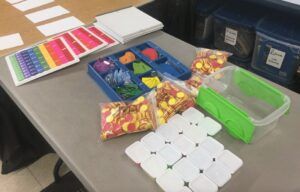
One of our goals for our math initiative schools this year to help teachers feel more comfortable consistently selecting the concrete, pictorial and abstract tools based on the given standard for their grade, K-5. When kids can have the conceptual understanding, the representational (also known as pictorial) presentation, then the abstract understanding is much better.
We recommend that teachers use this CPA sheet with some of their lessons before they start backwards designing. Many teachers aren’t sure yet which CPA piece can be added to what they’re teaching. My recommendation would be to look at the objective in your district-purchased book, then go to the Common Core Math Companion to make sure that you really understand what the students need to know and what’s really essential. Sometimes there are lots of added pieces in the district-purchased book that might not be necessary, especially if the kids are functioning below grade level. Once you feel comfortable with adding the CPA tools, then you can take your lessons and backwards design them (stay tuned for a blog and resources on backwards design to come very soon!).



